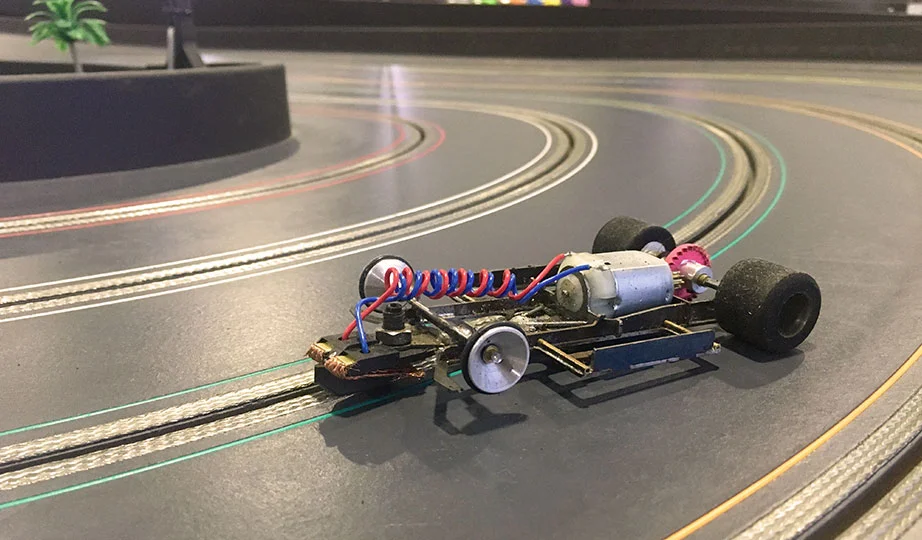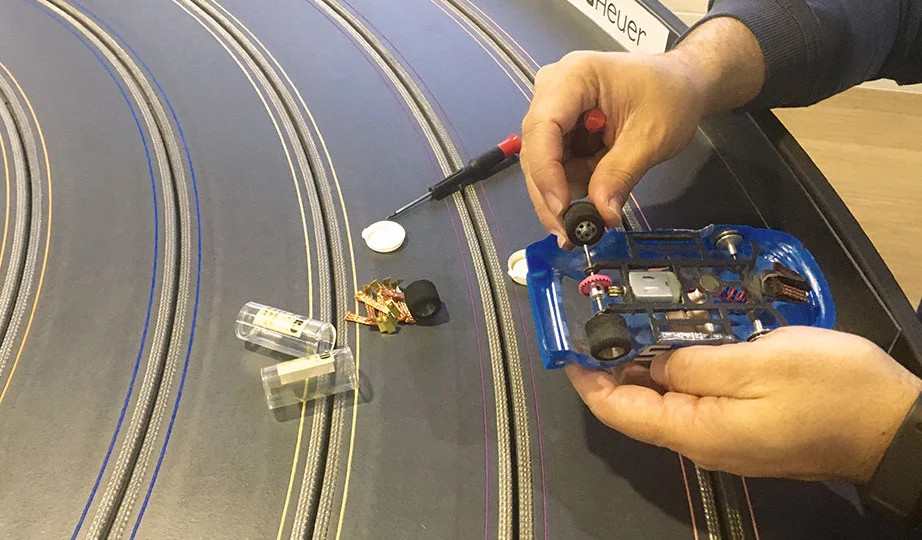At Race Party we're obviously obsessed with slot cars. From the car to the track, have you ever wondered how slot cars work?
Slot car racing - over 100 years old!
Slot car racing was created in 1912 by the Lionel Corporation and started getting really popular around the 60's. The appeal has never worn off and slot car racing is an activity that is still enjoyed by many today as both a leisurely pursuit and a competitive hobby.
The game involves racing miniature electric cars guided by blades or pins that fit into fine groves, also known as slots, on a miniature track, hence the highly creative name - 'slot cars'.
Choosing your ride
While most slot cars are smaller replicas of real cars, motorcycles or trucks, some are specifically designed for high-speed competitive racing and bear little resemblance to an actual car.
The Race Party high speed slot car is focused on high performance.
When people want to go fast they'll buy stock slot cars and customise them for better performance. However, the truly die-hard racers find a body they like and then add a motor to it or even build their own cars from scratch.
Getting around the track
Usually, slot cars have an electric motor that draws power from the track. The driver uses their hand-held controller to raise or lower the voltage of the electricity travelling through the track to make their car. More simply, squeeze the trigger to go fast, let it go to slow down and stop.
Most tracks (like those at Race Party) only let one slot car to race per lane but there are some fancy tracks that use digital technology to let multiple cars to race in one lane and even switch lanes!
Since there is basically nothing holding a slot car to a track, other than the pin on its underside, the goal for racers is to win a race by getting their slot car around the track as quickly as possible without coming out of the groove and spinning out, or flying off the track completely (keeping poor Ian at Race Party busy with constant repairs!).
Ian keeping our cars in action with a quick pit stop after a spectacular crash.
The modern slot car tracks of today are either plastic or routed tracks. Plastic tracks allow for versatility in layout because they are assembled from many pieces. Routed tracks are made from one or two pieces of material and generally allow for smoother racing, making them a popular choice for serious competitions.
Sometimes you can find large, highly-detailed tracks modelled on real racing tracks, such as our very own Monaco and Albert Park tracks. But, in most cases you'll see more simple stripped down tracks used for competitions.
Magnets are incorporated with some tracks to keep the cars from spinning out as easily. Though, some slot car racers believe racing without magnets is better because it requires more skill and allows the cars to move more realistically.
Once slot car drivers become familiar with a track, it's time to refine their technique and improve their speed around the track. Knowing which corners you can take at full speed, and which are a bit more risky will help you go faster and, ultimately, win the race!
Time to race!
Now that you know how it all works, why not try slot car racing at Race Party?
Slot car racing is awesome fun for all ages. Book your next party, corporate challenge or a casual racing session via the form below:









